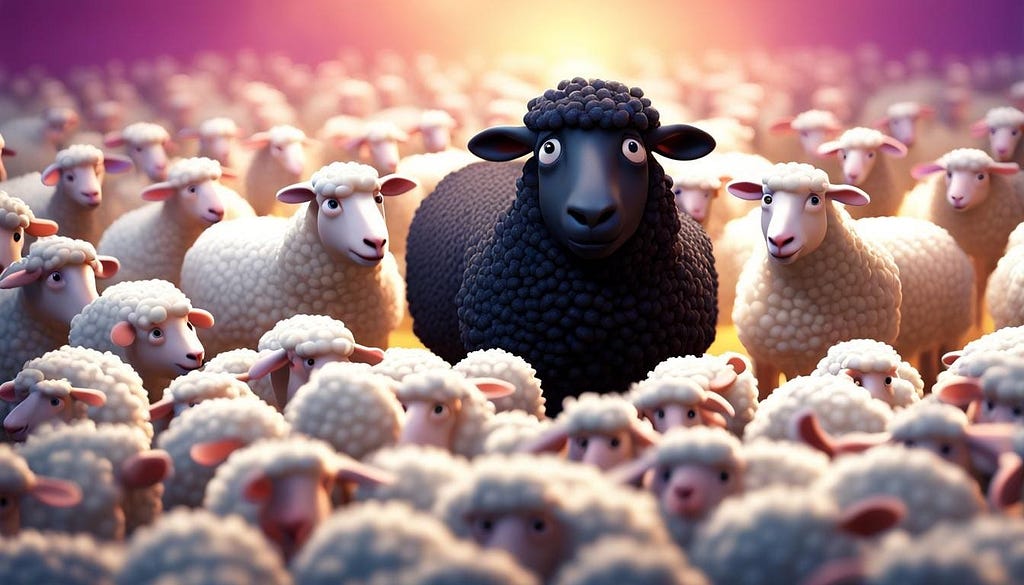“If you are always trying to be normal, you will never know how amazing you can be.” — Maya Angelou
Picture the scene. An employee who doesn’t fit the mould eventually finds a role and a manager who understands him. The culture, the boss, and the work provide an ideal environment for him to flourish. Eventually, his boss is headhunted elsewhere, is promoted or retires and the new configuration exposes the employee. His new manager is a number-cruncher, a left-brainer, unable or unwilling to enable his potential. She devotes more time to financial metrics and reporting than to the future growth in products, services, or customers. After months of pain, ostracization, and often gaslighting, he is moved on or gently encouraged to do so. He finds himself not involved in any meaningful projects. He finds that he is not invited to any meetings. He no longer has any resources at his disposal.
His new manager doesn’t believe that he adds any tangible value, so she labels him as a poor fit for her new configuration. She consults his colleagues (who highly rate him), but they are hesitant as they do not want to be guilty by association, so they go with her “better judgement”. As Nate Silver aptly observed, “When we can’t fit a square peg into a round hole, we’ll usually blame the peg.” But what if the round hole should be square or cater for multiple shapes?
Fostering a creative culture, providing additional support, and creating immersive experiences might engage employees and unlock the latent potential of square pegs. However, we try to force them toward the centre of the bell curve and in doing so we lose their potential.
Organisational Einstein Syndrome?

Albert Einstein, the archetypal genius, did not conform to the traditional trajectory of child prodigies. His delayed speech until age 5 challenged the conventional understanding of intellectual development. Einstein’s reluctance to speak was grounded in his simple rationale — he saw no reason to. This phenomenon of delayed speech was later coined “Einstein Syndrome”. Avoiding the stigma of labels, he later emerged as one of the most influential scientists of the 20th century, challenging our perceptions of conventional milestones.
Another genius, one of the world’s greatest theoretical physicists, Richard Feynman, won the Nobel Prize in physics. In his book, “Surely you’re joking, Mr. Feynman!”, Feynan shares the critical intervention of his former high school physics teacher, Mr Bader.

Recognising his lack of stimulation, Mr. Bader presented Feynman with a unique challenge. One day, Mr Bader told him to stay after class. “Feynman,” he said, “you talk too much, and you make too much noise. I know why. You’re bored. So I’m going to give you a book. You go up there in the back, in the corner, and study this book, and when you know everything in this book, you can talk again.”
Henceforth, in every physics class, young Feynman paid no attention to what was going on with Pascal’s Law or whatever the rest of the students were doing. He was up in the back, engrossed in his book on Advanced Calculus.
This decision changed the trajectory of Feynman’s education and life, illustrating the transformative impact of kindling unstimulated minds. These minds are often labelled as troublemakers, lazy and les enfants terrible, but once suitably ignited, they can quickly be transformed from black sheep to black ops.
Bird’s Sheep: Pixar’s Pick

Brad Bird, the visionary director behind Pixar’s “The Incredibles” and “Ratatouille,” discovered, boredom, frustration and under-stimulation can be a powerful catalyst for creativity.
For the making of the highly-grossing hit, “The Incredibles”, Bird was faced with the seemingly impossible task of animating realistic flowing hair. While we take this for granted today, flowing hair was a technical marvel back then. Rather than relying on conventional thinking, Bird sought out the discontented and unorthodox thinkers within Pixar — the “black ops” team.
Bird’s directive was clear: “Give us the black sheep. I want artists who are frustrated, who have another way of doing things that nobody’s listening to.”This decision led to a revolution in animation, proving that unconventional minds, organised as a focused “black ops” team, can crack the most challenging problems. The success of “The Incredibles,” achieved at a lower cost and with more intricate animation, demonstrated the power of embracing the unconventional within a creative team.
The parting message of this Thursday’s Thought is that every organisation has black sheep. These gainsayers are often (mis)labelled as naysayers. They are misunderstood, reviled, attacked, gaslit and ostracized. However, if enabled, if stimulated, and if unlocked, those who challenge the status quo can crack complex challenges. Nurturing unconventional thinkers may be the key to new realms of creativity and innovation.
Thanks for Reading
For more on “Black Sheep Thinking” check out our latest episode of the Innovation Show with Todd Dewett, PhD on his book: “Dancing with Monsters: A Tale About Leadership, Success, and Overcoming Fears.” Just published…
From Black Sheep to Black Ops: Unleashing Latent Potential was originally published in The Thursday Thought on Medium, where people are continuing the conversation by highlighting and responding to this story.